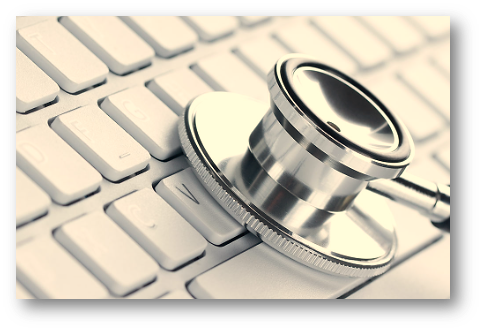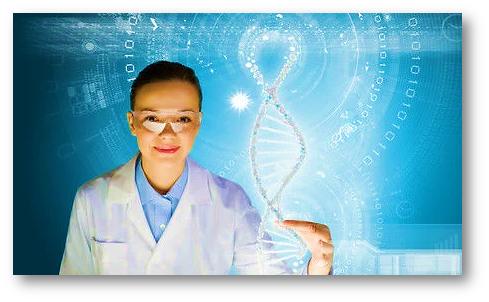
Advanced biology health refers to the study of the molecular and cellular basis of health and disease, and the development of new treatments and therapies based on this understanding. This can include research in areas such as molecular medicine, where scientists study the molecular basis of diseases and use this knowledge to develop new therapies, or biomedical engineering, where researchers develop new technologies and techniques for improving healthcare. Advanced biology health is a broad field that encompasses many different disciplines and approaches
Health and science are closely interconnected. Science plays a vital role in understanding how the human body works and how to prevent, diagnose, and treat diseases. It has led to the development of many life-saving treatments and therapies, including vaccines, cancer therapies, and medications for various diseases. Science also helps us understand how different factors, such as diet, exercise, and environmental exposures, can impact health. Additionally, science is used to develop technologies, such as medical devices and diagnostic tools that are used to improve healthcare. Overall, science is essential for advancing the field of medicine and improving human health.

There are many modern life-saving protocols that are being used today to treat and prevent diseases. Here are a few examples:
USE OF MODERN SCIENCE IN VACCINATION
Vaccines are one of the most effective tools we have to prevent diseases. They work by introducing a small amount of a weakened or inactivated form of a disease-causing agent, such as a virus or bacterium, into the body. This helps the immune system recognize and fight off the pathogen if it is encountered again in the future.
Modern science has played a crucial role in the development of vaccines, which are one of the most effective tools we have to prevent diseases. Here are a few ways in which modern science has been used in the development of vaccines:
Identifying pathogens:
Modern science has helped us identify the pathogens, such as viruses and bacteria that cause diseases. This includes using techniques like DNA sequencing to identify the genetic makeup of the pathogen and understand how it works.
Developing vaccine candidates:
Once a pathogen has been identified, modern science is used to develop vaccine candidates that can stimulate the immune system to recognize and fight off the pathogen. This involves using techniques like genetic engineering to create weakened or inactivated forms of the pathogen.
Testing vaccine candidates:
Before vaccines are approved for use, they must undergo rigorous testing to ensure they are safe and effective. This includes conducting clinical trials to evaluate the vaccine’s efficacy and safety in humans.
Manufacturing vaccines:
Once a vaccine has been developed and tested, modern science is used to manufacture the vaccine at a large scale. This involves using techniques like fermentation to produce large quantities of the vaccine in a consistent and safe manner.
Overall, modern science has played a vital role in the development of vaccines and continues to do so as new vaccines are developed to prevent emerging diseases.
MODERN SCIENCE AND ANTIBIOTIC THERAPIES
Antibiotics are medications that are used to treat infections caused by bacteria. They work by killing or inhibiting the growth of bacteria in the body.
Modern science has played a crucial role in the development of antibiotics, which are medications that are used to treat infections caused by bacteria. Here are a few ways in which modern science has been used in the development of antibiotics:
Identifying pathogens:
Modern science has helped us identify the pathogens, such as bacteria, those cause infections. This includes using techniques like DNA sequencing to identify the genetic makeup of the bacteria and understand how it works.
Developing antibiotic candidates:
Once a pathogen has been identified, modern science is used to develop antibiotic candidates that can kill or inhibit the growth of the bacteria. This involves using techniques like synthetic chemistry to create new compounds that have antimicrobial activity.
Testing antibiotic candidates:
Before antibiotics are approved for use, they must undergo rigorous testing to ensure they are safe and effective. This includes conducting clinical trials to evaluate the antibiotic’s efficacy and safety in humans.
Manufacturing antibiotics:
Once an antibiotic has been developed and tested, modern science is used to manufacture the antibiotic at a large scale. This involves using techniques like chemical synthesis to produce large quantities of the antibiotic in a consistent and safe manner.
Overall, modern science has played a vital role in the development of antibiotics and continues to do so as new antibiotics are developed to treat emerging infections.
ANTIVIRAL MEDICATIONS IN MODERN HEALTHCARE STRATEGIES

Antiviral medications are used to treat infections caused by viruses. They work by inhibiting the reproduction of the virus or by boosting the immune system’s ability to fight off the infection. Here are a few ways in which antiviral medications are used in modern healthcare strategies:
Prevention:
Some antiviral medications can be used to prevent the spread of viral infections, such as influenza and HIV. For example, the flu vaccine is an antiviral medication that can help prevent the spread of the flu.
Treatment:
Antiviral medications are often used to treat viral infections, such as influenza, HIV, and hepatitis. These medications can help reduce the severity and duration of the infection and prevent complications.
Management:
For chronic viral infections, such as HIV and hepatitis, antiviral medications are often used to manage the infection and prevent progression to more serious stages.
Overall, antiviral medications play a vital role in modern healthcare strategies for the prevention, treatment, and management of viral infections.
ULTRA-SPECIFIC SURGERIES IN THE MODERN HEALTHCARE SYSTEM
Surgery is a medical procedure that involves the removal, repair, or replacement of damaged or diseased tissue or organs. It is often used to treat cancer, remove damaged or diseased organs, and repair injuries. In modern healthcare, there are many ultra-specific surgeries that are used to treat specific medical conditions or injuries. Here are a few examples of ultra-specific surgeries that are used in modern healthcare:
Laser surgery:
Laser surgery is a type of surgery that uses a focused beam of light to cut or remove tissue. It can be used to treat a wide range of conditions, including cataracts, glaucoma, and skin conditions.
Robotic surgery:
Robotic surgery is a type of surgery that is performed using a robot to assist the surgeon. It can be used to perform a wide range of surgeries, including cardiac surgery, gynecologic surgery, and urologic surgery.
Microsurgery: HEALTH
Microsurgery is a type of surgery that is performed using a microscope or other specialized equipment to perform very precise and delicate surgical procedures. It can be used to repair or reconstruct small structures, such as blood vessels or nerves.
Minimally invasive surgery:
Minimally invasive surgery is a type of surgery that is performed through small incisions or using specialized instruments. It can be used to treat a wide range of conditions, including cancer, heart disease, and gastrointestinal disorders.
Overall, ultra-specific surgeries are an important part of modern healthcare and can help improve patient outcomes and reduce recovery time.
KIDNEY TREATMENT/DIALYSIS BY APPLYING MODERN HEALTHCARE TOOLS
Dialysis is a medical treatment that is used to remove excess waste and fluid from the blood of people with kidney failure. It is typically done using a machine that filters the blood outside of the body. Dialysis is an important aspect of modern healthcare. Dialysis is a medical treatment that is used to remove excess waste and fluid from the blood of people with kidney failure. It is typically done using a machine that filters the blood outside of the body. Here are a few ways in which modern healthcare tools are used in kidney treatment and dialysis:
Dialysis machines:
Dialysis machines are used to filter blood during dialysis. There are two main types of dialysis machines: hemodialysis machines, which use a membrane to filter the blood, and peritoneal dialysis machines, which use the lining of the abdomen to filter the blood.
Catheters:
Catheters are tubes that are inserted into a blood vessel or the abdomen to allow access to the blood for dialysis. They are typically used in hemodialysis and peritoneal dialysis.
Access devices:
Access devices, such as arteriovenous fistulas or grafts, are used to create a connection between an artery and a vein to allow access to the blood for dialysis.
Dialysis solutions:
Dialysis solutions are used in peritoneal dialysis to filter the blood. They contain electrolytes and other substances that help remove waste and excess fluid from the blood.
Overall, modern healthcare tools play a vital role in kidney treatment and dialysis, helping to improve patient outcomes and quality of life.
CARDIOPULMONARY RESUSCITATION IS A MODERN LIFE SCIENCE TECHNIQUE
Cardiopulmonary resuscitation (CPR) is a modern life science technique that is used to restore circulation and breathing in people who have suffered cardiac arrest. It involves compressions on the chest and rescue breaths. CPR is an important life-saving technique that can be used by healthcare professionals and laypeople alike. Here are a few ways in which modern science and technology are used in CPR:
Defibrillators: HEALTH
Defibrillators are portable devices that are used to shock the heart back into a normal rhythm during cardiac arrest. They use an electric current to reset the heart’s electrical activity and can be used by laypeople as well as healthcare professionals.
Automated external defibrillators (AEDs):
AEDs are portable defibrillators that are designed to be used by laypeople. They are often found in public places, such as airports and schools, and are easy to use with clear instructions and prompts.
Chest compressions:
Chest compressions are an important part of CPR. They help circulate blood and oxygen to the body and can be performed manually or using a mechanical CPR device.
Rescue breaths:
Rescue breaths, also known as mouth-to-mouth resuscitation, involve blowing air into the lungs to help restore breathing. They can be performed manually or using a mechanical ventilation device.
Overall, modern science and technology play a vital role in CPR, helping to improve the chances of survival for people who have suffered cardiac arrest.
CONCLUSION:
However, it is generally accepted that modern healthcare tools and technologies, such as vaccines, medications, and medical devices, have played a significant role in improving healthcare outcomes. For example, vaccines have helped reduce the incidence of many infectious diseases, and advances in medical technology, such as imaging technologies and minimally invasive surgery, have helped improve the accuracy and success of medical procedures. Similarly, modern medications and treatments have helped improve the management and treatment of many chronic conditions, such as heart disease and diabetes.
Overall, it is likely that the incorporation of modern healthcare tools and technologies has contributed to an improvement in healthcare outcomes and a reduction in mortality rates for many conditions. However, further research and analysis would be needed to quantify this impact. There are many modern life-saving protocols that are used to prevent and treat diseases and injuries, and these protocols are constantly evolving as science and medicine advance.
KEYWORDS: modern healthcare, life-saving protocols, medicine, injuries, advance, medications, technologies, Treatments, Infections, science
REFERENCES:
- Ara, J., Bhuiyan, H., Bhuiyan, Y. A., Bhyan, S. B., & Bhuiyan, M. I. (2021). Ar-based modern healthcare: A review. arXiv preprint arXiv:2101.06364.
- Clements, A., Halton, K., Graves, N., Pettitt, A., Morton, A., Looke, D., & Whitby, M. (2008). Overcrowding and understaffing in modern health-care systems: key determinants in meticillin-resistant Staphylococcus aureus transmission. The Lancet infectious diseases, 8(7), 427-434

